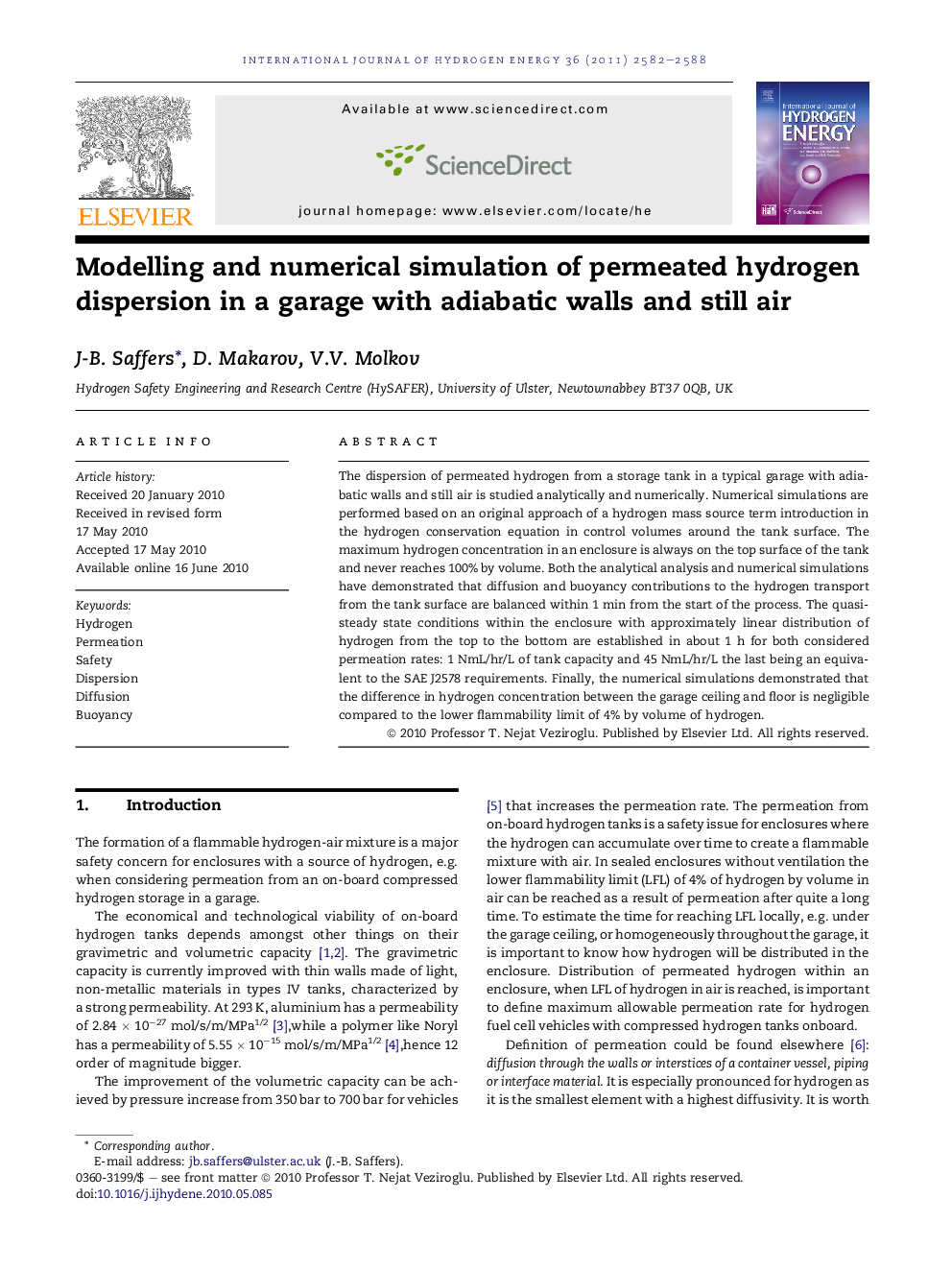| Article ID | Journal | Published Year | Pages | File Type |
|---|---|---|---|---|
| 7724566 | International Journal of Hydrogen Energy | 2011 | 7 Pages |
Abstract
The dispersion of permeated hydrogen from a storage tank in a typical garage with adiabatic walls and still air is studied analytically and numerically. Numerical simulations are performed based on an original approach of a hydrogen mass source term introduction in the hydrogen conservation equation in control volumes around the tank surface. The maximum hydrogen concentration in an enclosure is always on the top surface of the tank and never reaches 100% by volume. Both the analytical analysis and numerical simulations have demonstrated that diffusion and buoyancy contributions to the hydrogen transport from the tank surface are balanced within 1Â min from the start of the process. The quasi-steady state conditions within the enclosure with approximately linear distribution of hydrogen from the top to the bottom are established in about 1Â h for both considered permeation rates: 1Â NmL/hr/L of tank capacity and 45Â NmL/hr/L the last being an equivalent to the SAE J2578 requirements. Finally, the numerical simulations demonstrated that the difference in hydrogen concentration between the garage ceiling and floor is negligible compared to the lower flammability limit of 4% by volume of hydrogen.
Related Topics
Physical Sciences and Engineering
Chemistry
Electrochemistry
Authors
J.-B. Saffers, D. Makarov, V.V. Molkov,
